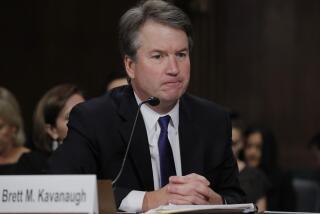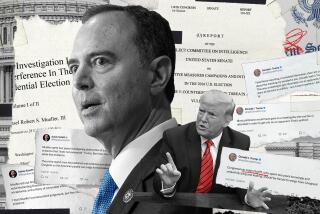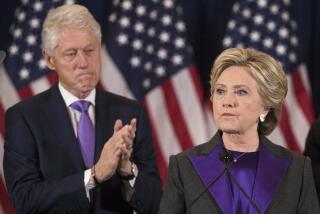The Mueller report is coming Thursday with color-coded cuts
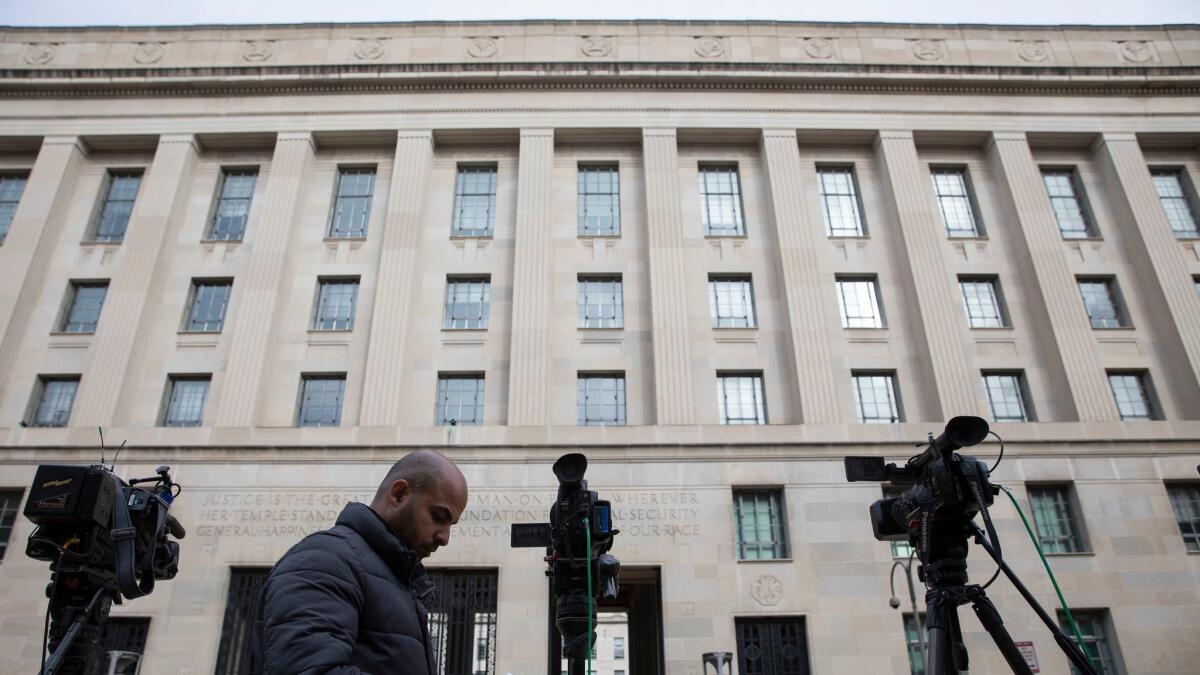
Reporting from Washington — The most consequential editing process in the country is almost over.
Lawyers from the Justice Department and the special counsel’s office have gone word by word, sentence by sentence through the nearly 400-page confidential report that Robert S. Mueller III completed last month, using color coding to conceal classified or other protected information.
The Justice Department will release the redacted report on Thursday morning, a spokeswoman said Monday.
At stake is not just what information becomes public from the special counsel’s 22-month investigation into Russia’s role in the 2016 election, but also the credibility of the entire enterprise.
Too many redactions or a botched process could deepen political uncertainty surrounding the Russia investigation and fuel concerns that Atty. Gen. William Barr is deliberately shielding President Trump from scrutiny.
“It’s important that the public see it, and also that the public have confidence [that] what they’re seeing is the real thing, and not some partial facsimile of the real thing,” said David S. Kris, a former assistant attorney general for national security in the Obama administration.
Kris, a founder of Culper Partners consultants, said the redaction process could be “extremely frustrating” for officials reviewing the document. “I’m sure they’re feeling the pressure,” he said, “not only to do this well but to do it quickly.”
The process can be arduous, especially when multiple agencies are involved, but the effort appeared near completion over the weekend.
“When they have a deadline, they can get it done,” said Mark S. Zaid, a Washington lawyer who works on national security issues.
Trump’s lawyers have prepared a counter report to give the public a competing narrative to Mueller’s document. Rudolph W. Giuliani, the former New York City mayor who represents the president, said Sunday that the legal team was “polishing it up.”
Barr told a Senate panel last week he was surprised that Mueller’s report did not contain a vetted summary that he could quickly release to the public.
Instead, he said, every page carried a warning that it contained what he called “6(e) material,” a reference to Rule 6(e) of the Federal Rules of Criminal Procedure, which establishes rules for grand jury secrecy.
That’s among the four categories of protected information that officials are redacting from the report, which is officially titled “Report on the Investigation Into Russian Interference in the 2016 Presidential Election.”
Each category has been assigned a color to identify the reason for each cut or trim, but for now the four hues are as closely guarded as the report’s contents.
Besides grand jury evidence, the categories include classified material from U.S. intelligence agencies or allies, information about ongoing investigations, and details that could “unduly infringe on the personal privacy and reputational interests of peripheral third parties.”
The vague final category raised concerns that prosecutors could try to shield the White House from embarrassing new disclosures. But Barr promised a Senate panel on Wednesday he wouldn’t hide unflattering information about the president.
“I’m talking about people in private life, not public-office holders,” he told the Senate Appropriations Committee on Wednesday.
Barr said he wasn’t consulting with the White House on what should be redacted, but he declined to say if he or his aides had briefed the president’s team on the contents. A spokesman for the White House declined to comment.
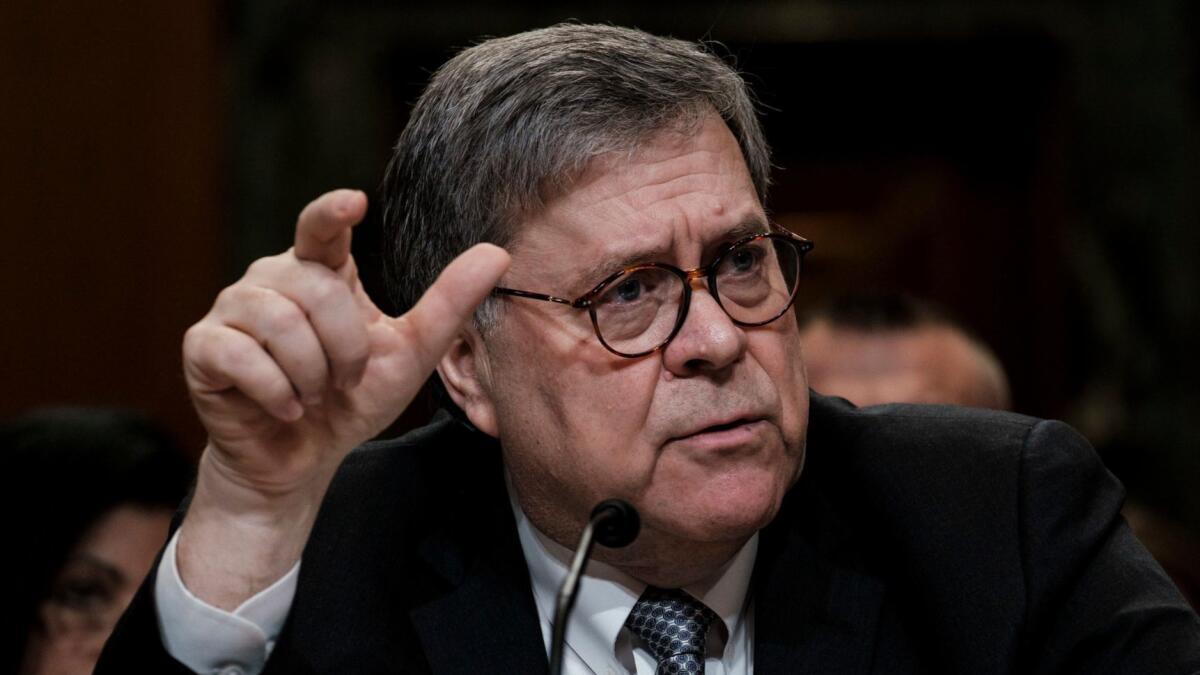
The report is likely to contain reams of previously unknown material. Barr wrote that Mueller’s prosecutors issued more than 2,800 subpoenas, executed nearly 500 search warrants, obtained more than 230 orders for communications records and and interviewed about 500 witnesses.
Mueller already has publicly unspooled much of his work in voluminous indictments, court filings and trial testimony since he was appointed special counsel in May 2017. But the only insight into his chief conclusions came in a four-page letter that Barr wrote to Congress on March 24.
Barr wrote that Mueller had not established a criminal conspiracy between Trump’s campaign and the Russian government’s attempts to interfere with the election, essentially clearing the president of the darkest allegations against him.
Barr also said the evidence “was not sufficient” to determine that Trump had obstructed justice by trying to interfere with the investigation. Deputy Atty. Gen. Rod Rosenstein, who appointed Mueller and supervised his work, concurred.
Mueller had not reached a conclusion on the matter. But he didn’t give Trump a clean bill of health, either, writing that, “while this report does not conclude that the President committed a crime, it also does not exonerate him,” according to Barr’s letter.
Mueller included evidence for a potential obstruction case, and Barr’s letter implied some incidents had not yet come to light.
Barr caused alarm among Democrats last week by describing court-ordered surveillance during the early stages of the Russia investigation as “spying” on Trump’s campaign. He later clarified that he was concerned that unauthorized surveillance might have occurred, and was not declaring that it had.
His language echoed some of the president’s most explosive criticisms about the surveillance and revived Democrats’ worries that Barr was not a fair broker in the process.
Trump quickly seized on Barr’s comments to renew his attacks on the Russia investigation.
“The Mueller Report, which was written by 18 Angry Democrats who also happen to be Trump Haters (and Clinton Supporters), should have focused on the people who SPIED on my 2016 Campaign, and others who fabricated the whole Russia Hoax. That is, never forget, the crime.....” Trump tweeted on Monday.
Whatever redactions are made, it’s unlikely the report’s release will be the final word on what becomes public from the investigation.
House Democrats have prepared a subpoena they say they will use, if necessary, to force the Justice Department to hand over the full, uncensored document. Such a subpoena, if issued, would probably start a long court battle.
Barr has signaled his willingness to negotiate with Congress on what other information he could provide.
“I’m willing to work on some of these categories,” he said.
Ken Gormley, president of Duquesne University in Pittsburgh and the author of books about the Watergate and Whitewater investigations, said letting lawmakers see the full document was crucial to ensure the redactions were handled appropriately.
“The only way we’ll ever know if this process worked is if Congress gets the whole report,” he said. “How can you know what’s redacted if no one else gets to see it?”
More to Read
Get the L.A. Times Politics newsletter
Deeply reported insights into legislation, politics and policy from Sacramento, Washington and beyond. In your inbox three times per week.
You may occasionally receive promotional content from the Los Angeles Times.
